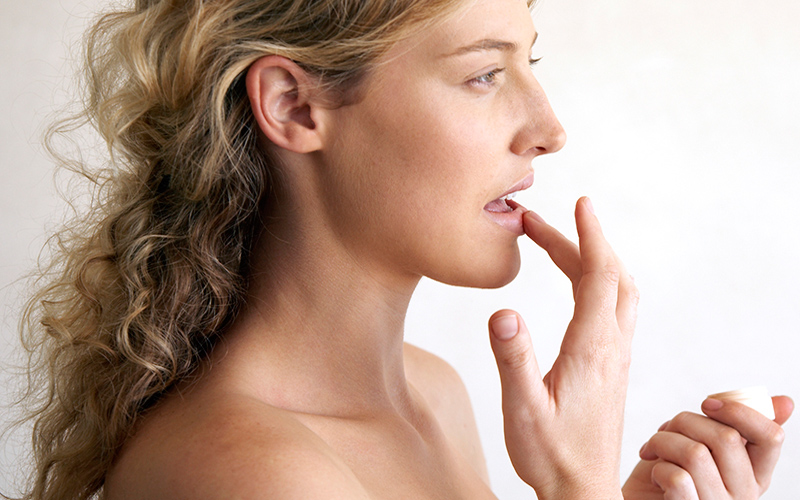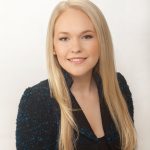
by guest blogger Ava Anderson, safe products advocate
The crisp, late-autumn air means that chapped lips are on their way. But before you reach for that conventional lip balm to treat them, read this: Chapped lips are not just an annual annoyance; they are your lips’ cry for help. When our lips become dry from harsh conditions, the top layers of skin (the lips only have three to five layers in all) send signals that they’re drying out to the bottom layer, which then produces new skin cells more rapidly.
Applying certain unnatural forms of moisture filled with harmful chemicals can interfere with the lips’ top layer’s emergency call for new skin cells, causing the lips to stay dry and cracked indefinitely. Worse, conventional lip balms include an array of toxic ingredients like hormone-disrupting parabens, dyes, synthetic fragrances, artificial flavors, and other dangerous chemicals like oxybenzene—not things you want to be putting on the sensitive skin of your lips, a location where you also have the tendency to consume the applied product.
This year, if your lips start to chap, avoid drying products with harmful chemicals and use safe, skin-feeding moisturizers instead.
Specifically, here are 4 types of ingredients to avoid when choosing a lip balm:
- Petrolatum. An oil-refining by-product that may contain carcinogens (depending on the refining process), petrolatum can create the illusion of hydrated skin while it in fact suffocates your pores. It merely creates a barrier so that moisture does not leave the skin. So while you might feel the instant gratification of a softened surface, you’re actually drying out the skin layers underneath by sealing out air and true moisture.
- Mineral oil. This is another petroleum product that coats the skin like plastic wrap, preventing it from breathing, which can cause the skin to age prematurely.
- Phenol, menthol, and camphor. These ingredients cool and anesthetize, but also aid in removing the lips’ protective layers of skin, causing drying, redness, and swelling. Phenol is also considered toxic to the central nervous system.
- Lanolin. Although it’s considered a natural product, there is controversy around the way lanolin is produced. Sheep’s wool is dipped in pesticides to kill parasites/mites; it’s chemically scoured to remove the lanolin then put through a centrifuge. Next, it undergoes a distillation process, which yields the finished lanolin product. Toxic pesticide residues remain in the lanolin, a fact that has been well documented.
So what’s really in that best-selling lip balm? The answer may surprise you. Thirteen of the 22 chemicals in one popular balm are ones that should be avoided.
Here’s the complete list of ingredients in one best-selling balm, with the ingredients to avoid noted with asterisk: *Padimate O, *White petrolatum, arachidyl propionate, *camphor, carnauba wax, cetyl alcohol, *D&C Red #6 barium lake, *FD&C Yellow #5 aluminum lake, *fragrance, isopropyl lanolate, isopropyl myristate, *lanolin, *light mineral oil, *methylparaben, *octyldodecanol, oleyl alcohol, *paraffin, *phenyl trimethicone, *propylparaben, titanium dioxide, white wax.
What to choose instead? Use truly safe lip products like balms containing organic coconut oil, beeswax, olive oil, shea butter, and/or cocoa butter to seal in moisture without the risks of petrolatum, mineral oils, and synthetic waxes.
If you’re looking for a lip balm with an SPF, we recommend non-nanoparticle zinc instead of oxybenzones and other chemical blockers, as most are known endocrine disruptors.
But the best advice is prevention: Cover your lips with a scarf, avoid licking your lips, breathe through your nose, and stay well hydrated.
 At the age of 15, Ava Anderson launched her safe line of personal care and home-cleaning products, Ava Anderson Non Toxic. Now in college, Ava is educating millions of American families annually on the issue of toxic chemicals in products through her line, which now includes baby, skin, hair, body, cosmetics, men’s, candles, bug, home, sun, pet, kids, garden, smile and auto products. An undergrad at Babson College in Wellesley, Massachusetts, Ava actively helps run her large company with over 80 employees and thousands of Ava Anderson Consultants in every state in the nation. Her goal is to force a paradigm shift on the issue of toxic chemicals in products—with your help.
At the age of 15, Ava Anderson launched her safe line of personal care and home-cleaning products, Ava Anderson Non Toxic. Now in college, Ava is educating millions of American families annually on the issue of toxic chemicals in products through her line, which now includes baby, skin, hair, body, cosmetics, men’s, candles, bug, home, sun, pet, kids, garden, smile and auto products. An undergrad at Babson College in Wellesley, Massachusetts, Ava actively helps run her large company with over 80 employees and thousands of Ava Anderson Consultants in every state in the nation. Her goal is to force a paradigm shift on the issue of toxic chemicals in products—with your help.




Where is Canada are Ava’s products sold?
Thanks for the info, Ava! I love it when you are featured on this blog! I will be sharing it with my friends!